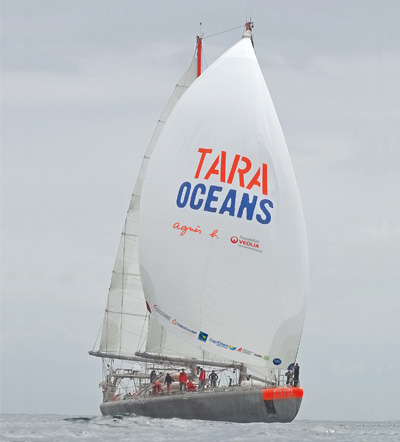
Tara Oceans/Tara Expeditions
![]()
So often it’s the night sky that captures the attention of people contemplating undiscovered forms of life. Yet stargazers might not always appreciate that however unlikely it is for any of us to learn of alien creatures from far off galaxies in our lifetimes, there is a much better chance for us to find never before seen living things in the oceans here on the planet Earth. So-called intelligent life probably isn’t lurking anywhere in the deep blue sea, except maybe in a ghost story or two, but it’s an accepted estimate within science that microbial diversity in the world’s oceans accounts for what are thought to be millions of unknown species of phytoplankton, including protists, small metazoans, viruses, and bacteria. If anyone intends to study these unknown microbes, though, they better do so before the organisms vanish along with eroding coral reefs and become characters in a ghost story of their own.
Warmer and acidified waters linked to human activities are disrupting subsurface ecosystems and turning the mission to study oceanic microorganisms into a race against time. A 2010 report in the journal Nature found that planktonic populations have declined by 40 percent since 1950. Appraising their health and numbers has significance beyond mere curiosity. As a food source, pelagic plankton constitute the foundation of the maritime food web. And as emitters of oxygen and as carbon sinks, they play a vital role in regulating the content and temperature of our atmosphere.




 Facebook
Facebook Permalink
Permalink Digg
Digg Reddit
Reddit LinkedIn
LinkedIn StumbleUpon
StumbleUpon Tumblr
Tumblr

